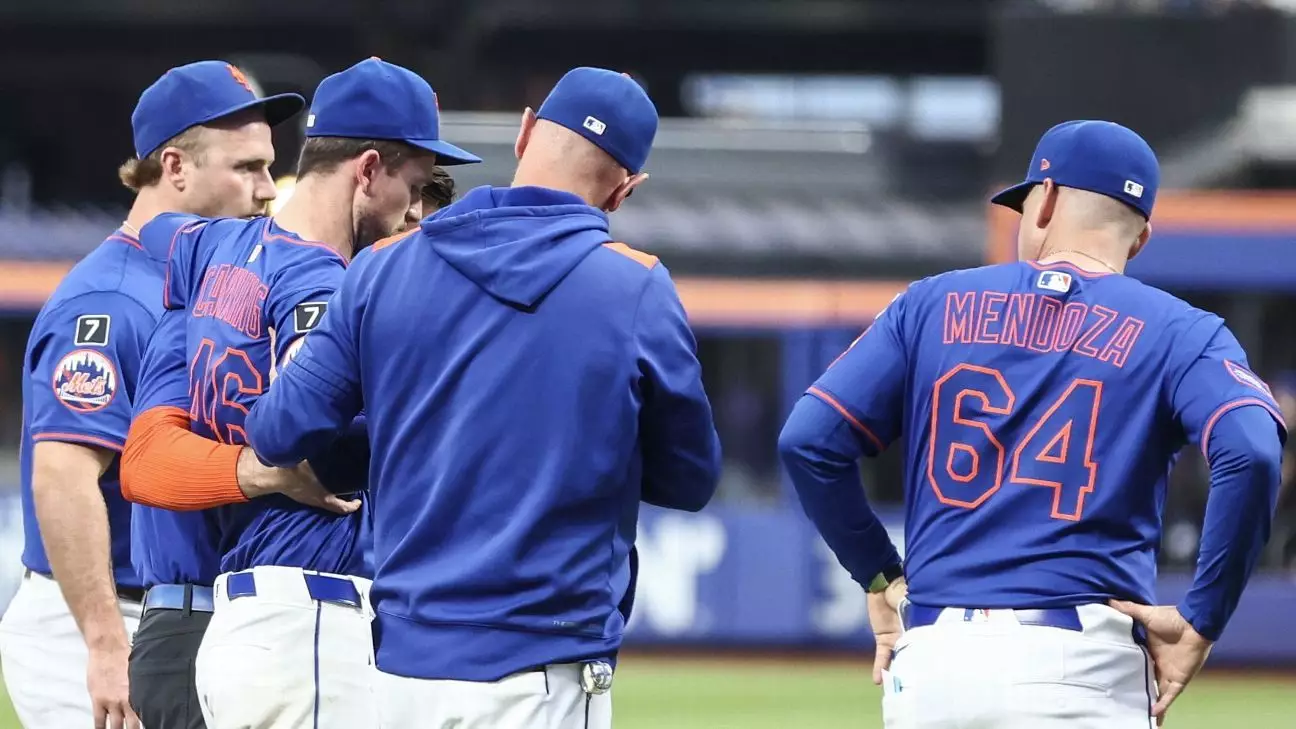The New York Mets find themselves at a precarious crossroads, as their pitching rotation is unraveling at an alarming pace. Griffin Canning’s recent injury, likely an Achilles tear, represents not just a single setback but a symptom of a deeper systemic fragility within the Mets’ pitching corps. What was initially reported as a left ankle injury quickly escalated into a much graver concern, underscoring the tenuous nature of maintaining pitcher health in the rigors of a long MLB season. Beyond the immediate physical toll on Canning, the larger narrative exposes flaws in durability and pitcher workload management that the Mets must confront.
Griffin Canning: A Small Beacon Amid Growing Turmoil
Canning’s performance this season had been a bright spot for the Mets amid an uneven rotation. His 7-3 record paired with a respectable 3.77 ERA demonstrated a promising rebound from a tough previous year. Notably, during the game against the Atlanta Braves, Canning showcased his potential by limiting damage, allowing only one hit and fanning three batters before tragedy struck. The manner of his injury — a noncontact Achilles event — is especially heartbreaking because it lacked the typical chaos of direct impact, emphasizing the underlying vulnerability of pitchers’ bodies even during routine plays.
The visuals were somber: Canning gripping his face, hopping on one leg before collapsing with his leg elevated, paints a distressing portrait of a player who suddenly found his season and possibly much more at risk. The immediate emotional response from teammates and management reflected the gravity of the loss. Pete Alonso’s candid reaction, describing the injury as “really, really wrong,” was not just empathy but a stark acknowledgment of the challenges the team faces.
Layered Injuries: A Cascade Within the Rotation
Canning’s injury is just the latest installment in a saga of misfortune plaguing the Mets’ starting staff. In the span of only a few weeks, the team has been robbed of critical arms: Ace Kodai Senga is sidelined with a right hamstring strain sustained catching a throw, and right-hander Tylor Megill has been out since mid-June dealing with an elbow sprain. Adding to this grim picture, Sean Manaea, who was poised to rejoin after a spring training oblique injury, is contending now with an elbow bone chip that threatens to stall his comeback further.
This domino effect of injuries has severely undermined the Mets’ chances for consistent success on the mound. Where a healthy rotation might provide stability and confidence, the Mets have been forced to scrape together innings from those available, resulting in uneven performances and a 4-10 record during this injury-ridden stretch. The return of Frankie Montas, who recently threw five scoreless innings, offers a rare glimmer of hope, suggesting reinforcements may emerge to steady the ship.
The Unrealized Cost of Pitching Depth and Team Strategy
At its core, this injury crisis calls attention to the Mets’ approach towards pitching allocation and the inherent risks of over-reliance on a handful of arms. The current scenario highlights not just a matter of bad luck, but also questions about how teams manage pitcher health, particularly with players like Canning whose durability had seemed promising this year. The Mets’ front office needs to confront the challenge of balancing performance expectations with conditioning and recovery strategies to safeguard player longevity.
Instead of merely reassessing the immediate replacement needs, there should be a broader conversation about systemic endurance, injury prevention, and how to build a pitching staff resilient enough to absorb such shocks without eroding the team’s overall competitive edge. This is a multifaceted puzzle involving training regimens, biomechanics, and even the psychological pressure pitchers face, which can translate into physical stress injuries.
Looking Beyond the Now: The Mets’ Imperative for Structural Change
While the Mets await MRI results and hope for positive rehab developments from injured pitchers, the painful truth is clear: The era of patchwork fixes and reactive injury management must give way to proactive innovation. The organization needs to rethink everything from scouting for pitchers with proven durability records to revamping in-season workload monitoring and investing in cutting-edge medical and training support.
Injuries like Canning’s, while unfortunate, should serve as catalysts for broader shifts in philosophy. A sustainable rotation is not merely a collection of talent but an ecosystem that prioritizes health as much as performance. The Mets are, at this moment, a case study in what happens when that balance tips too far toward expectation and not enough toward preservation. The challenge ahead is substantial, but so is the opportunity to rebuild with resilience at the forefront.

